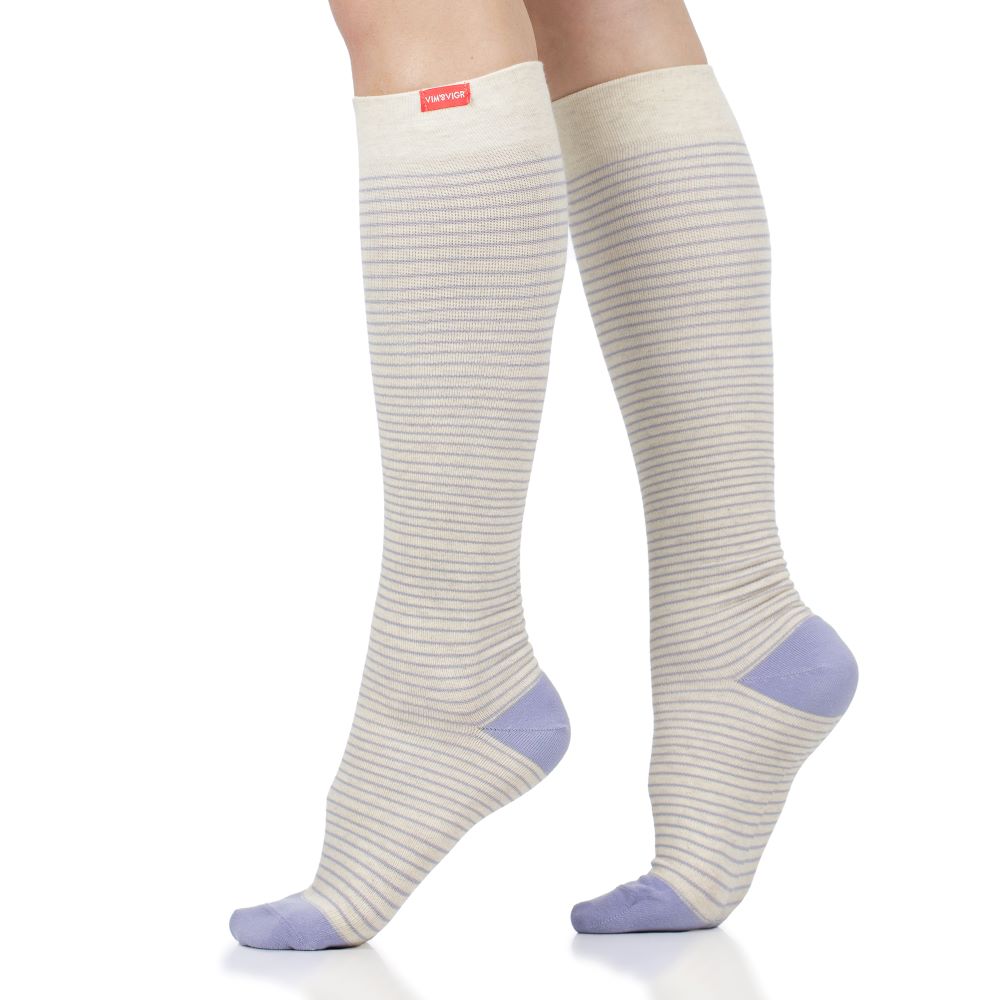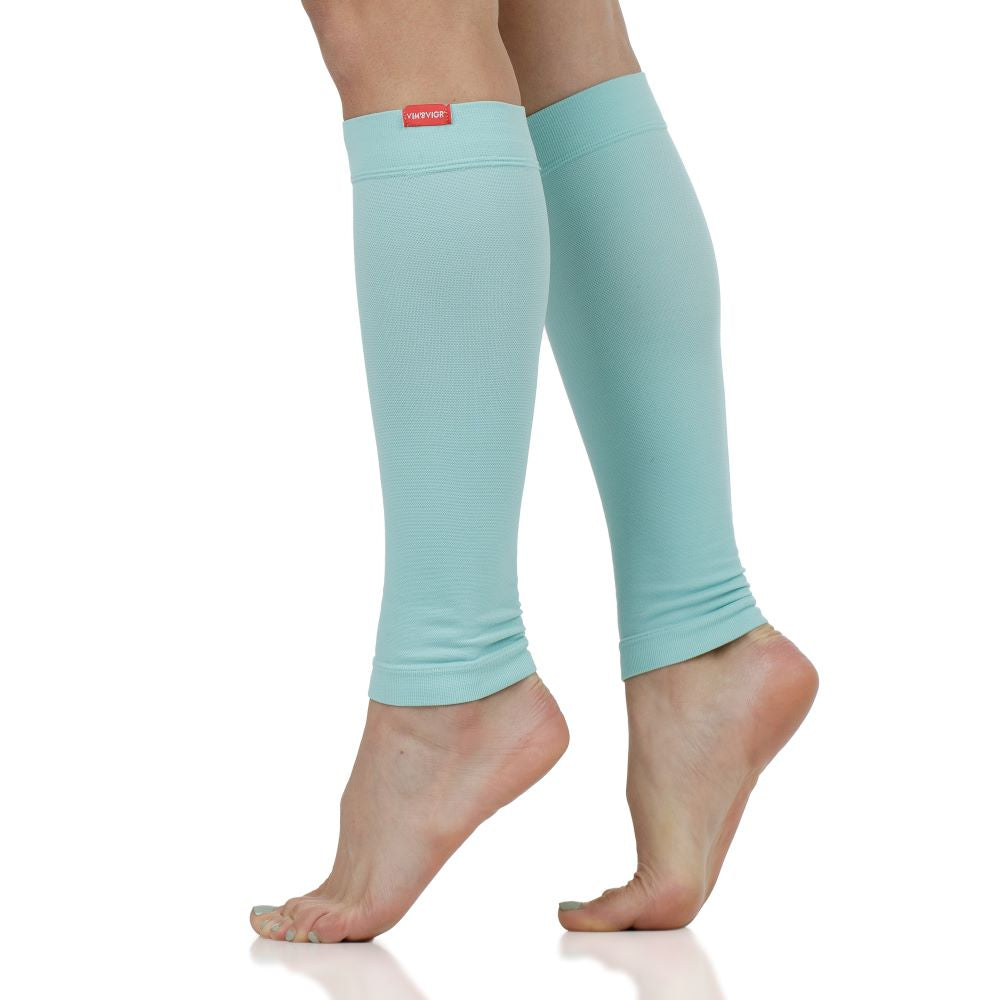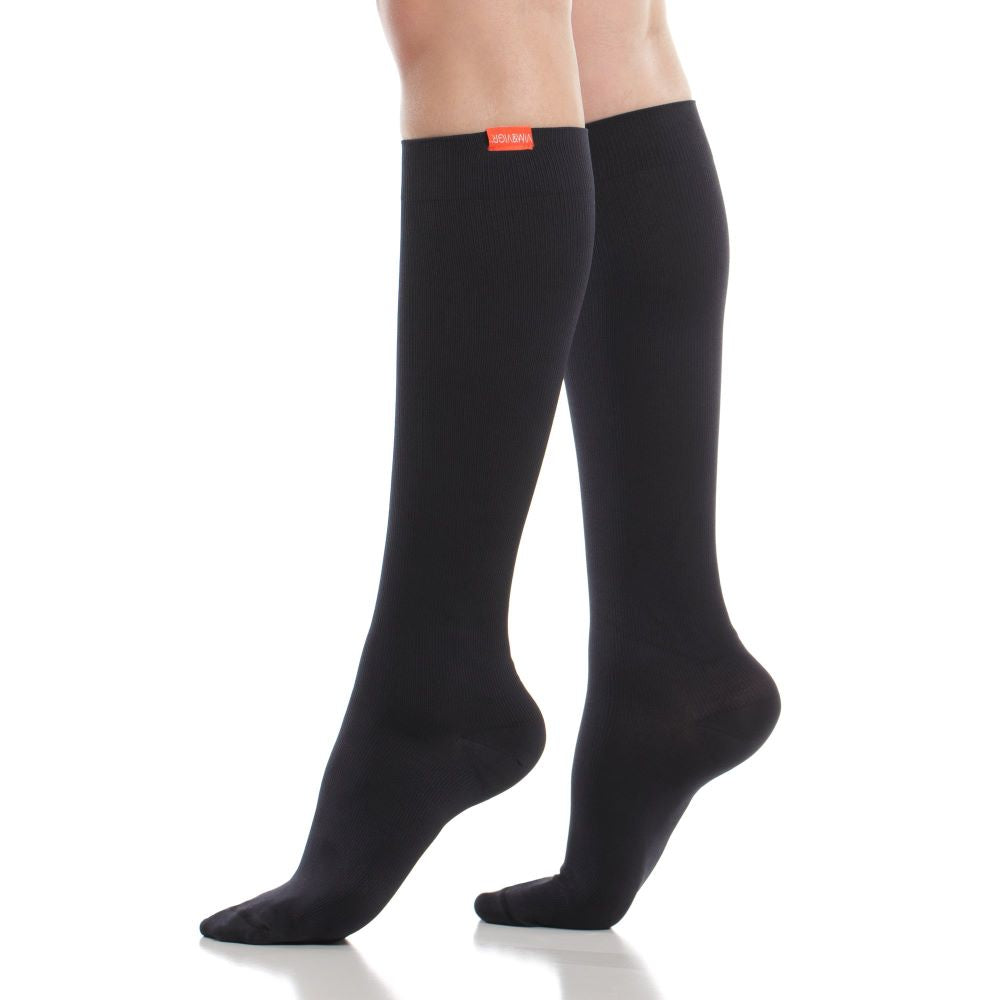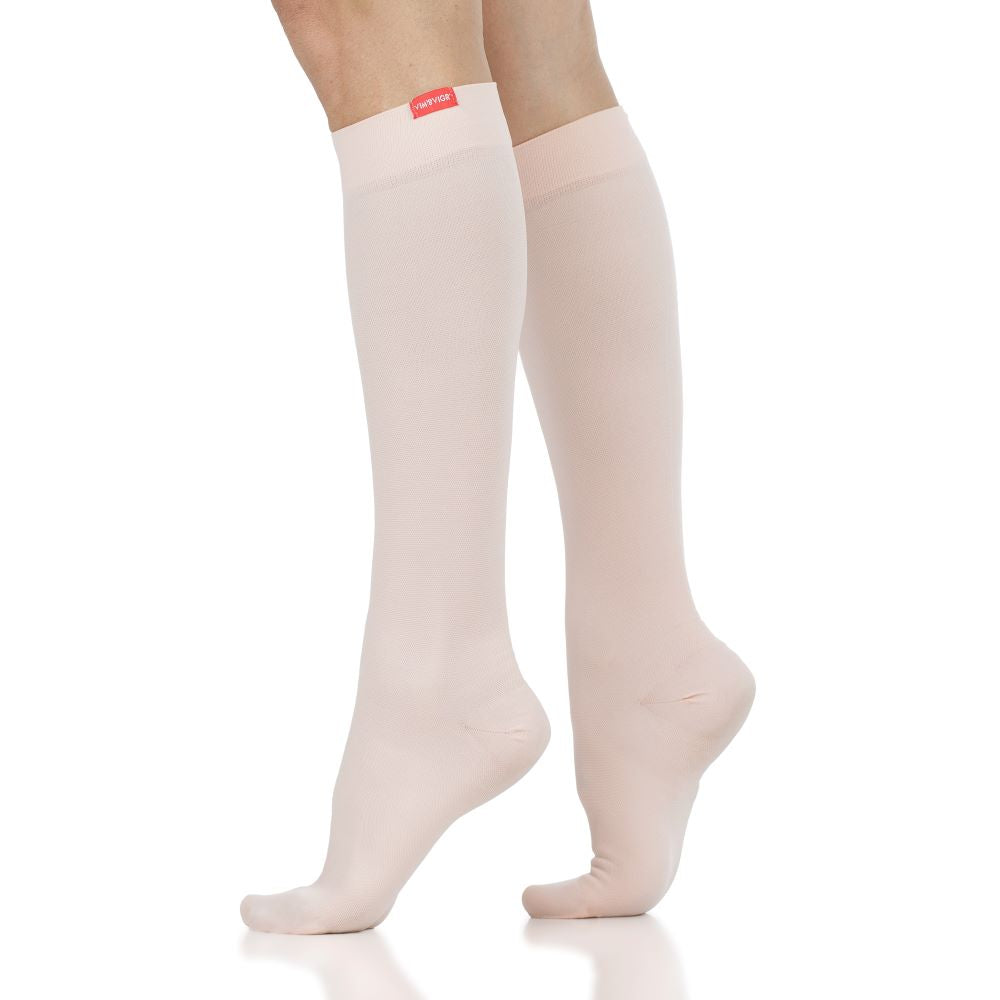What is Merino Wool + How is it Made?
Merino wool is a fantastically versatile lightweight fabric that’s been a hit with hikers, walkers, runners and more, in cold or hot weather. For the past 8 years, our merino wool compression socks have been well loved by all kinds of our customers for their lightweight yet temprature regualting feel. That’s because Merino wool fibers, unlike those found in regular wool, are thinner and softer. This makes sports clothing and near-the-skin items like socks made of Merino wool extremely efficient at evacuating sweat, avoiding unpleasant odors, and keeping the body cool or warm as needed.
But where does Merino wool come from, how is it made and what are its great benefits that make it so special?
Read on to find out all about where this great fabric originates, how your Merino wool clothing is made and what you can expect from Merino compression socks and other items of clothing.

What Is Merino Wool?
Just like regular wool, the Merino variety is a type of fabric that is used widely in garment making. This type of wool is made from natural fibers and is usually soft and comfortable. It also has great moisture wicking properties and is known for its breathability.
As a fabric, Merino wool is employed widely for clothing that goes next to the skin, for example base layers and compression socks. This is because it’s softer and more pleasant to wear than regular wool, while also keeping the wearer warm. The temperature regulating properties of Merino wool also make it a good choice in summer, because it lets the skin breathe well and allows the body to cool down efficiently, without locking in the sweat.
Where Does Merino Wool Come From?
All wool comes from sheep, but Merino wool comes from a specific breed: you guessed it, the Merino sheep! These hardy animals were initially bred in Spain in the Middle Ages. After an initial monopoly on their breeding, Merino sheep spread around Europe and are now bred widely in New Zealand and Australia, too.
Although we can trace the breed of Merino sheep back to the 12th century, the type of wool they produce now wasn’t around from the start. Through selective crossbreeding through the years, the Spanish farmers arrived at sheep that produce the soft wool we know today, sometime in the 15th century or even later.
Today, Merino sheep are easy to breed thanks to a high degree of adaptability. They are bred predominantly for their wool, which means they are smaller in size than regular sheep and they absolutely need to be shorn regularly to shed their coats. Their wool doesn’t stop growing, so neglecting them can lead to them overheating and having mobility issues.
How Is Merino Wool Made?
From shearing Merino sheep regularly, we obtain the Merino wool fabric that is then used in clothes manufacturing. Merino fibers tend to be softer and thinner than other natural fibers, making them ideal for use with garments that are worn close to the skin.
Today, it’s Australian and New Zealand Merino sheep whose wool is most prized for high-end products and for sports items, too. Grown all year round, these sheep are shorn regularly and cared for at high standard, so that those buying Merino wool items can be reassured of the ethics behind their fabric.
Is Merino Wool Better Than Cotton?
Cotton is a soft, breathable fabric that’s very versatile. Our cotton compression socks are capable of more design variation because of thier soft nature. You can find cotton or a blend of it in most clothing these days, and it’s certainly a good choice for everyday wear. However, when compared to Merino wool, the latter is a lot more moisture wicking and has the benefit of thermal regulation that cotton does not.
Wearing lightweight Merino wool compression socks for hiking in the summer is better than cotton, because you can count on the former to stay dry even when you sweat in a small enclosed space (your hiking boots!). Additionally, Merino wool compression socks dry quicker than cotton if you do step in a puddle. Finally, Merino wool keeps away odors and bacteria, which cotton cannot guarantee.
When it comes to cold weather, Merino wool base layers are really soft and easy to layer under other garments. This means that not only can you benefit from the heat generation of Merino fibers, but you can upgrade your protection against the elements as you see fit. And you wouldn’t be sweating! However, if you wear cotton base layers, these are not as efficient at wicking away moisture and keeping your body from losing the heat. So, in winter, cotton can be a good second layer to Merino wool.

What Is So Special About Merino Wool?
While all wool is a natural insulant, great at keeping us warm and good at absorbing moisture, Merino wool has additional characteristics that make it ideal for sports activities. We reccomend our Merino wool compression socks for hikers, bikers, skiiers, and outdoor enthusiasts for this very reason! Merino fibers are capable of absorbing up to 30% of their volume in moisture, but then release this outwards, avoiding becoming heavy and developing unpleasant odors.
Additionally, all wool is made of keratin – the protein that is also found in human hair. This is why it’s so gentle and hypo-allergenic, leading to it being suitable for wearing right against the skin. However, traditional wool fibers are thicker and less flexible than Merino fibers. They can fray and are a little harsher against the skin, leading to itchiness and potentially irritations (especially for those suffering from eczema or sensitive skin prone to allergic reactions). By using Merino wool instead, all likelihood of negative skin reactions disappears.
The other benefit of Merino wool is that, thanks to its moisture wicking ability, it maintains a dry environment in and around your body when you wear it. That leads to less of a favorable breeding ground for bacteria. This is not just hygienic, it also helps prevent odors (which are mainly the result of bacteria feeding on sweat!).
The light weight and moisture wicking abilities of Merino wool make it a perfect choice for athletic apparel that lets the skin breathe. Merino wool is also very elastic, moving with your body and returning to its original shape easily. In contrast, other athletic gear made from synthetics can lose its shape after a few wears, and it doesn’t do a great job of removing moisture from your body.
Is Merino Wool Itchy?
Thanks to the finer fibers and the elasticity that Merino wool possesses, garments made from this material are not itchy. On the contrary, coupled with the keratin that is present in all wool, Merino wool clothing is soft and caring for your body. It is an ideal first layer to wear on the skin, and it regulates your body temperature in cold and warm climates alike.
Is Merino Wool Machine Washable?
Many people think Merino wool clothing is high maintenance and must be hand-washed, possibly because it’s so thin and lightweight. However, this fabric is also elastic, hard-wearing and resistant, which means it will not lose its shape or shrink easily, as long as you follow the instructions for machine washing.
We recommend washing Merino wool garments after each wear, although if you’re on a multi-day hike or traveling, the odor resistance of this fabric means you can get away with maybe a couple of wears. A delicate cycle with cold water is usually best, and then let your Merino wool compression socks dry naturally. Since they are so good at getting rid of moisture, you won’t need to wait long until you can wear them again!
Making the Most of Merino Wool
Whether you are an avid runner or hiker, struggle with temperature regulation and find wool too itchy, or are simply looking for an item to keep your feet warm in the winter and cool and dry in summer, Merino wool compression socks are a perfect choice. Our wide range of styles can be worn during sports, but also just for a regular day out or for lounging around at home. Either way, they are soft and comfortable enough that you’ll forget they’re on your feet!



















Leave a comment